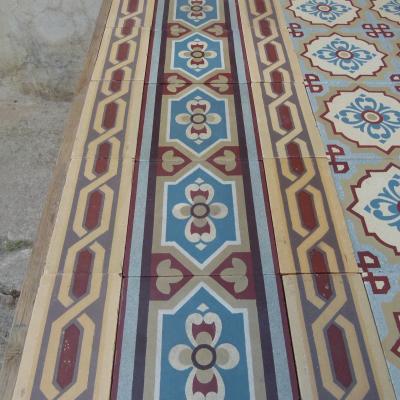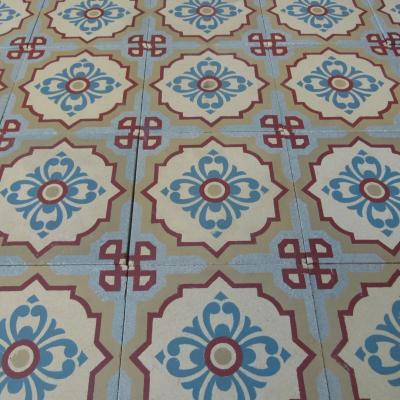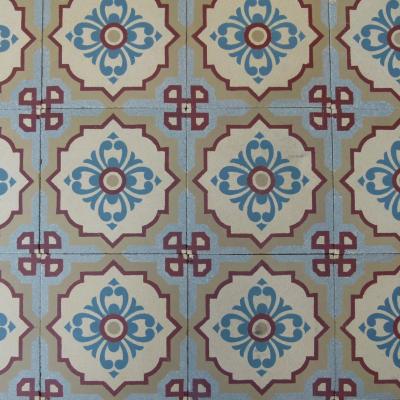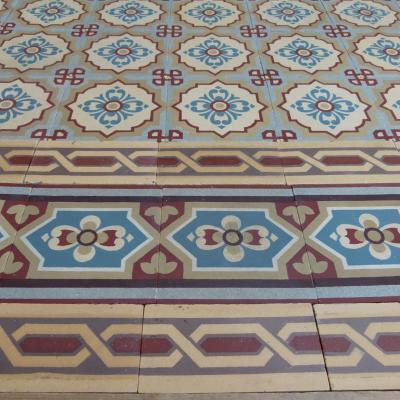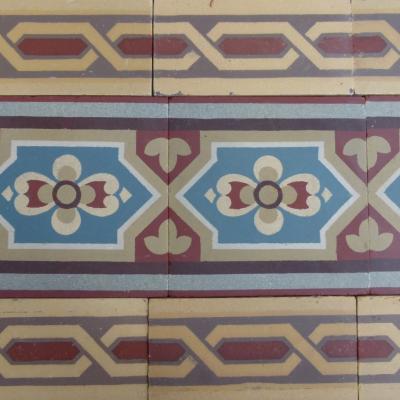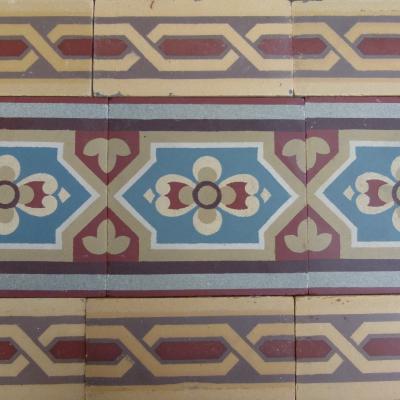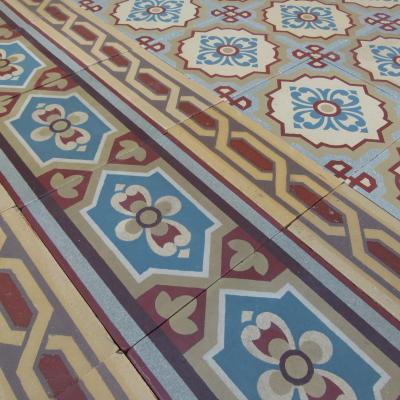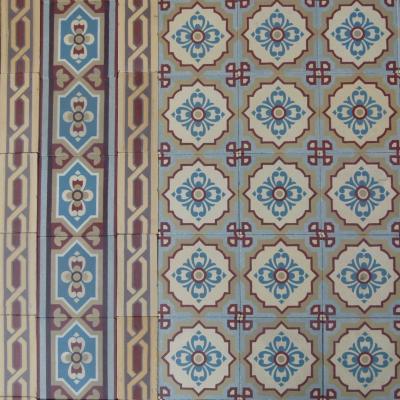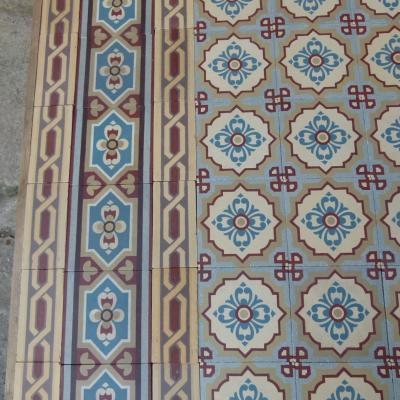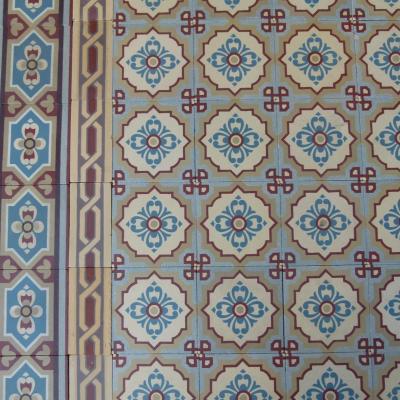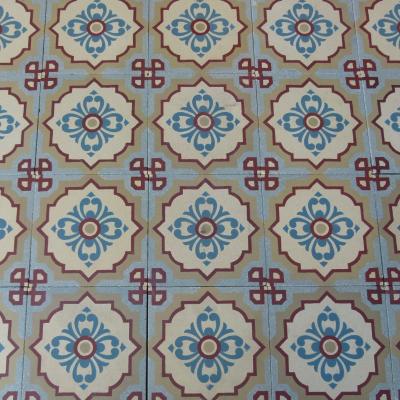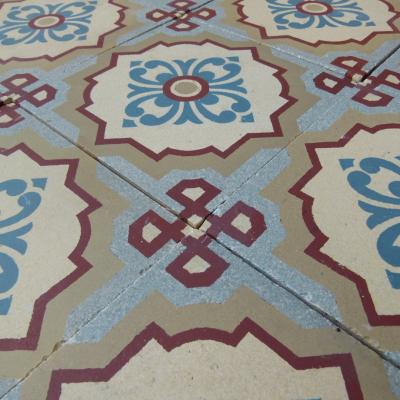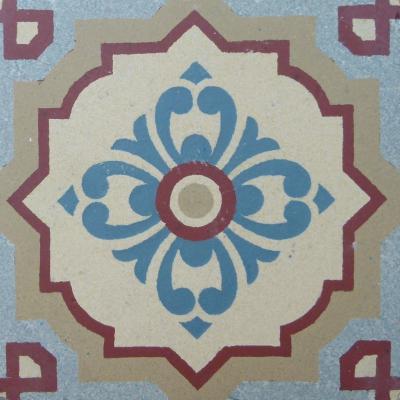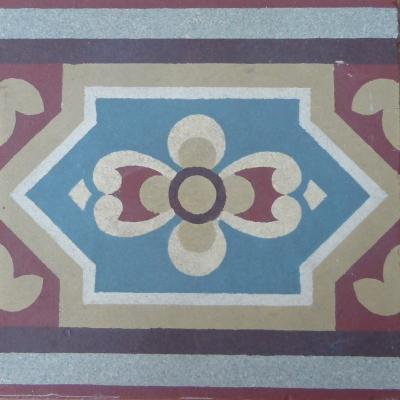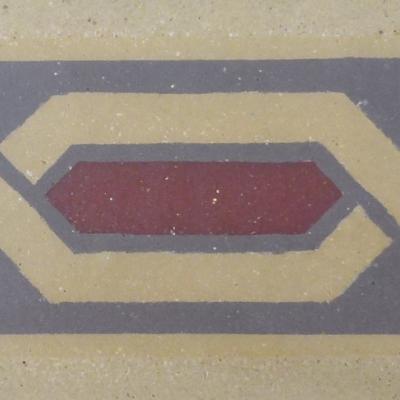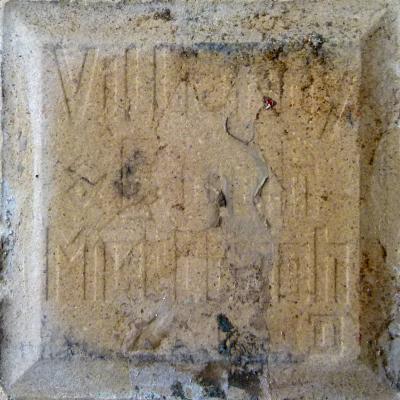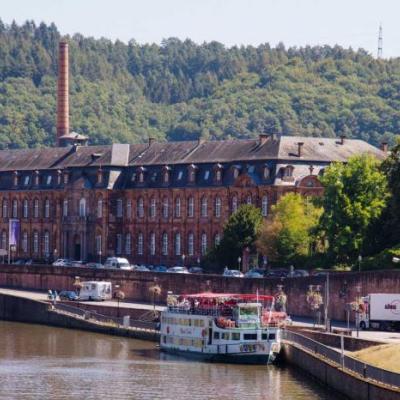8.25m2+ Villeroy & Boch Mettlach triple border floor, late 19th century
A triple border ceramic encaustic floor of a principal 17cm sq field tile and a full size and half size border, laid in duplicate.
These handmade tiles were manufactured in the late 19th, early 20th century in Mettlach, Germany and are reverse stamped VILLEROY AND BOCH, METTLACH. The company has traded since 1748 and continues to trade internationally, leveraging its superb quality and heritage. We include in the gallery a photograph of their factory on the banks of the river Saar.
The floor has restored beautifully, having been reclaimed from the entrance hall of a farmhouse close to Epehy, Picardy, northern France; colours are crisp, the teal especially so, and the ceramic is excellent.
There are a limited number of the border tiles available, 32 of the large border tiles and 63 of the half size borders. No border corners are available as the border tiles we originally laid as horizontal runs in the hallway, rather than framing the floor, but they can easily be mitre cut to create corner tiles.
Total surface area - 8.25m2+ / 89 sq ft+
Country of Origin - Germany
Manufacturer - Carrelages Boch Freres, Mettlach
Dating - Late 19th, early 20th century
Tile size - 17cm / 6.7 inches
Tile thickness - +/- 16mm
Weight per tile - 1.3kg / 46 ounces
Border lay - Same size and half size borders in duplicate
Underfloor heating systems - Yes
Indoor / Outdoor application - Both
Fixed to walls or inside showers - Yes, with the correct cements and grouts
Tile quantities:-
Field tiles - 223- 6.45m2 / 69.4 sq ft.
Large borders - 32 - 0.9m2 / 9.7 sq ft. or 5.4 linear metres / 17.9 linear feet
Half size borders - 63 plus 8 corners - 1.m2 / 11 sq ft. or 11.5 linear metres / 37.8 linear ft.
Tile size, thickness and tones
Antique tiles were most commonly made in single or two tile moulds. Before current computer automation methods their moulds were made my hand and the colour slips mixed by eye. Kiln temperatures could also be variable, as could the firing time. The result is that often tiles display subtle size and thickness variations and there can be tonal variations in colours, owing to the slip mixing and/or firing time. All of this makes these handmade tiles unique and adds to their charm. Some floors display their subtle variations in size and tones, some not, but when photographing we always take a random section of the floor so that it is representative of the whole. A tiler should always dry lay a section of the tiles to familiarise himself with them before starting to fix lay.
Condition
All of our floors go through rigorous quality control during the restoration process. We include tiles which have groutable small chips and edge nibbles, expected of tiles more than 100 years old , but include for free any rejects, which the tiler can then use for offcuts. The photographs in the gallery are of a c.1.5m2 / 16 sq ft.randomly taken sample of the larger floor and therefore representative of the whole floors condition and patina.
Can we help?
If you can provide a technical drawing, or a simple sketch with key dimensions, we are happy to assist in evaluating and recommending the best layout of the floor in your area of choice..
CE272-1




